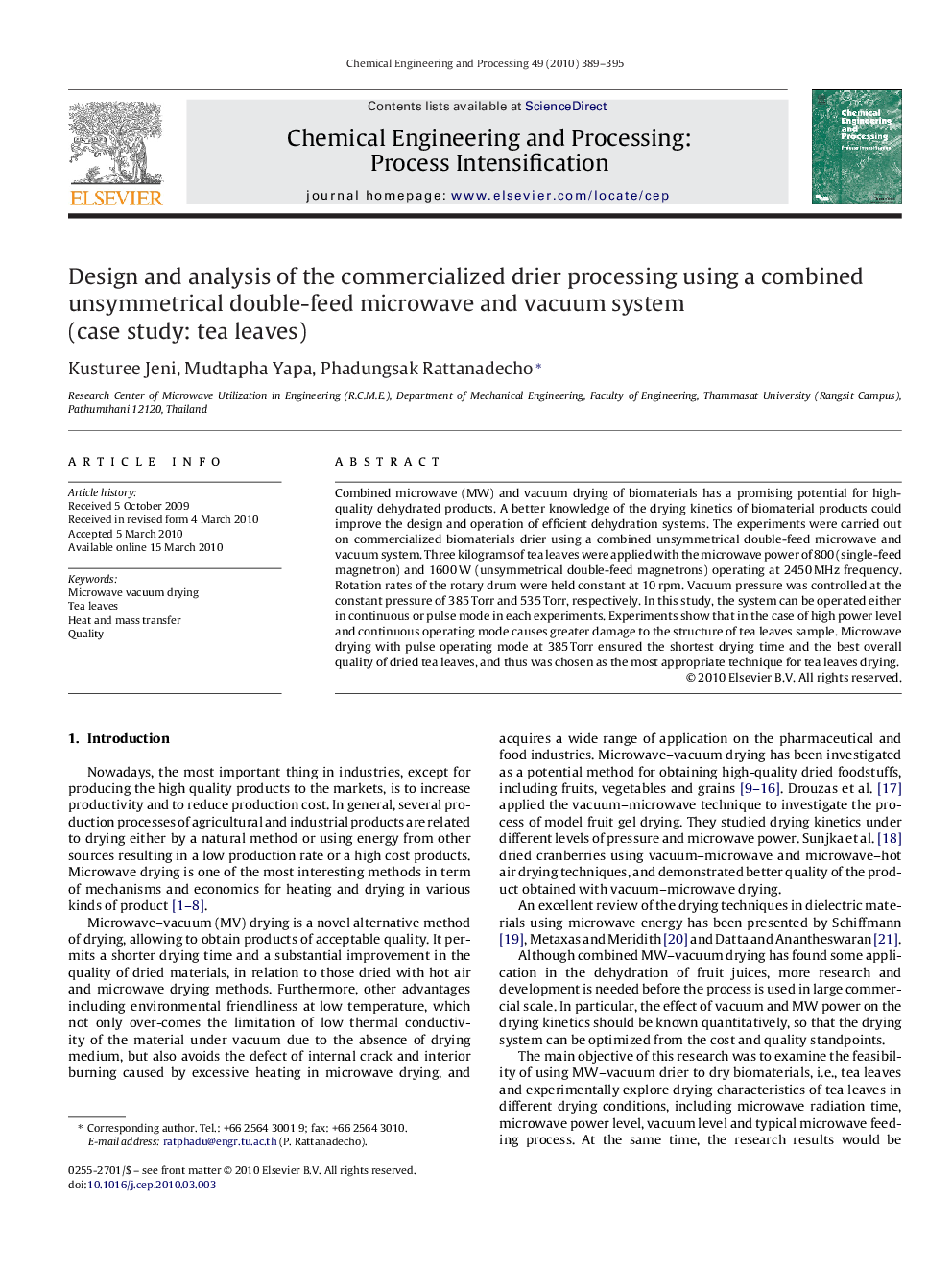| Article ID | Journal | Published Year | Pages | File Type |
|---|---|---|---|---|
| 688433 | Chemical Engineering and Processing: Process Intensification | 2010 | 7 Pages |
Combined microwave (MW) and vacuum drying of biomaterials has a promising potential for high-quality dehydrated products. A better knowledge of the drying kinetics of biomaterial products could improve the design and operation of efficient dehydration systems. The experiments were carried out on commercialized biomaterials drier using a combined unsymmetrical double-feed microwave and vacuum system. Three kilograms of tea leaves were applied with the microwave power of 800 (single-feed magnetron) and 1600 W (unsymmetrical double-feed magnetrons) operating at 2450 MHz frequency. Rotation rates of the rotary drum were held constant at 10 rpm. Vacuum pressure was controlled at the constant pressure of 385 Torr and 535 Torr, respectively. In this study, the system can be operated either in continuous or pulse mode in each experiments. Experiments show that in the case of high power level and continuous operating mode causes greater damage to the structure of tea leaves sample. Microwave drying with pulse operating mode at 385 Torr ensured the shortest drying time and the best overall quality of dried tea leaves, and thus was chosen as the most appropriate technique for tea leaves drying.
